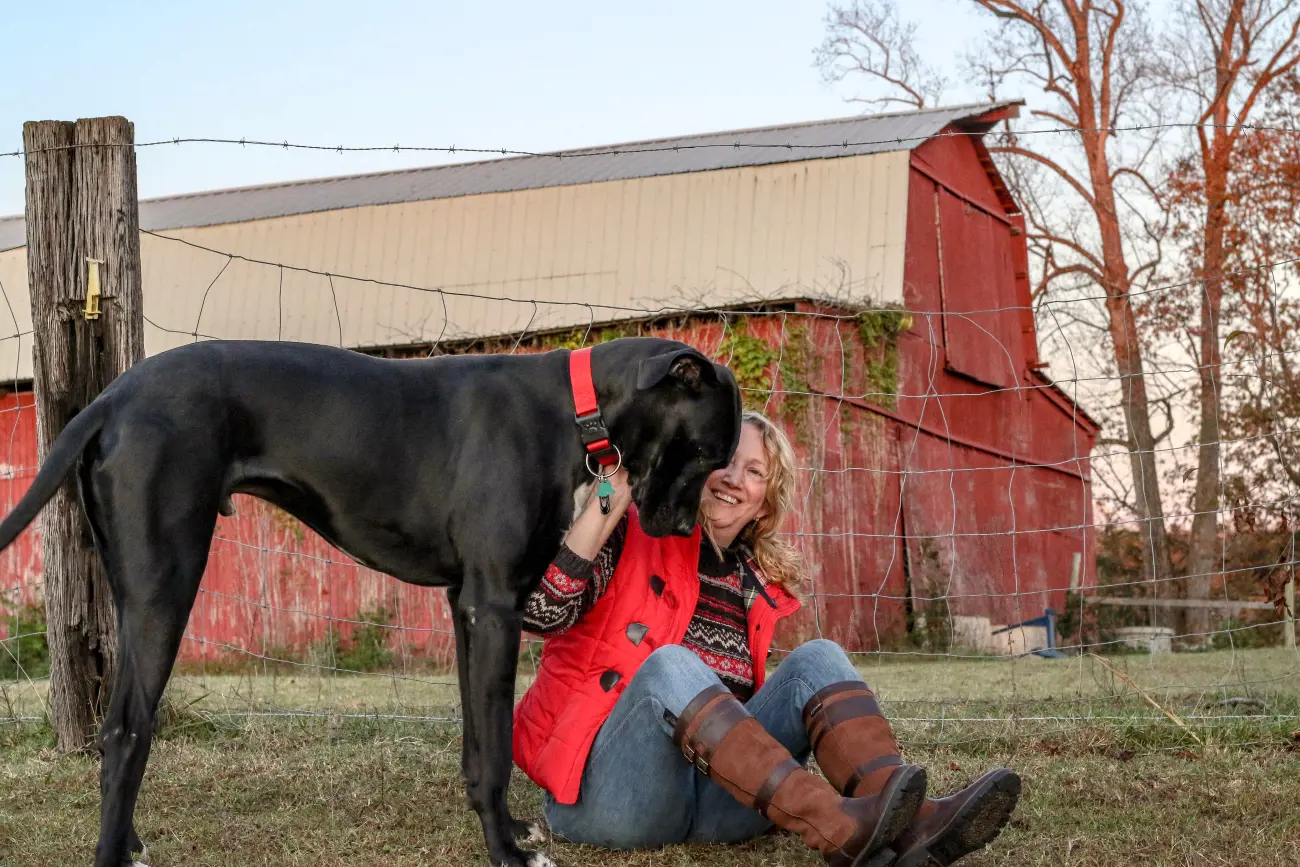Taking care of your pets in the cold: Common cold weather illnesses in cats and dogs
16th January, 2024

Winter brings with it a myriad of challenges for our furry companions. Cold weather conditions can lead to various illnesses in cats and dogs, some of which can be life-threatening if not addressed promptly. As the temperature drops, the risk of common cold weather illnesses in pets escalates.
Our four-legged companions can be just as susceptible to the chill as we are, and conditions such as hypothermia and frostbite can rapidly become serious threats. Regular vet checks and proper winter care can keep them safe and healthy during these frosty months.
Hypothermia in pets
Hypothermia is a cold weather illness that can seriously affect both dogs and cats. It is a medical emergency that occurs when your pet's body temperature drops below the normal range due to prolonged exposure to cold temperatures.
Understanding pet hypothermia
When your dog or cat's body temperature drops below normal levels, they are at risk of hypothermia. For dogs, the normal body temperature ranges between 101°F and 102.5°F, while for cats, it's slightly lower, ranging between 100.5°F and 102.5°F. If their body temperatures fall below these ranges due to exposure to cold weather, it can be considered as hypothermia.
Spotting the symptoms
The signs of hypothermia in pets include a pale skin tone, shivering/shaking, and a certain level of lethargy. If not addressed promptly, hypothermia can lead to severe consequences, including coma, heart failure and other organ shutdowns.
If you're preparing for your puppy's first winter, check out our blog for more helpful information.
Preventive measures and treatments
The best way to prevent hypothermia is to limit your pet's exposure to the cold weather. Avoid leaving them outside overnight or when you're not home. If they must be outside, provide suitable shelter and access to water.
If you suspect that your pet has hypothermia, it's important to keep them warm. Wrapping them in warm blankets and placing a heating pad or a covered hot water bottle near their body can increase their body temperature. Be careful not to place it directly on their skin to avoid burns.
Frostbite in pets
Frostbite is a common cold weather condition that affects pets, particularly dogs. It's a form of tissue damage that occurs due to cold weather exposure and primarily affects the extremities of your pet's body.
Recognising frostbite in pets
Frostbite occurs typically in your pet's ears, tail and toes. The severity of frostbite depends on several factors including your pet's size, age, fur thickness and the length of time they've spent outside in the cold.
Symptoms of frostbite
Signs of frostbite in pets include pale skin, often with a bluish-white hue, indicating restricted blood flow. This happens because the body restricts blood flow to the skin when exposed to extreme cold, focusing instead on maintaining core body functions. Frostbite-affected areas may also have ice formations and the skin may feel cold or brittle.
Frostbite treatment and prevention
If you suspect your pet has frostbite, keep them warm but avoid applying direct heat to the frostbitten area. Instead, treat the area with a warm, dry towel. Pat the area gently; do not massage it, as this can cause pain and may even result in tissue damage.
Pet antifreeze poisoning
Antifreeze and other ice-melting chemicals are often used during frosty weather to keep cars running and to melt snow on driveways and sidewalks. However, these substances can be extremely dangerous to pets.
Understanding antifreeze poisoning in pets
Antifreeze contains ethylene glycol, a substance that, while sweet to taste, is extremely toxic to pets. Ingestion of antifreeze can lead to poisoning, exhibiting symptoms like nausea, vomiting, unsteady walking, seizures and even coma.
Prevention of antifreeze poisoning
To prevent antifreeze poisoning, store antifreeze containers out of your pets' reach. Clean up any antifreeze spills promptly and protect your pet's paws by using pet booties and wiping their paws after being outside.
Cold and flu in pets
Like humans, cats and dogs can catch a cold or flu, especially during the winter months. These conditions generally cause discomfort to your pet and are not usually serious, but should be treated promptly to prevent complications.
Recognising cold and flu symptoms in pets
The symptoms of a cold or flu in pets are similar to those in humans. They may include a runny nose, coughing, sneezing, fatigue and watery eyes.
Treating cold and flu in pets
Most cases of cold and flu in pets can be handled at home with plenty of rest and hydration. However, if your pet shows severe symptoms such as difficulty breathing, refusal to eat or drink, extreme lethargy, or seems to be in pain, consult your vet immediately.
Arthritis flare-ups in winter months

Arthritis is a chronic joint condition that can worsen in very cold temperatures. The drop in temperature can cause joint inflammation and swelling, resulting in discomfort and pain for your pet.
Understanding arthritis in pets
Arthritis involves chronic joint pain and inflammation. The joint instability that causes abnormal movement in the surrounding bones can lead to arthritis. Over time, the cartilage in the joint erodes, leading to bone-to-bone contact that causes discomfort.
Managing arthritis in pets
To manage arthritis in your pet during winter season, ensure they maintain a healthy weight and engage in daily walks. If you notice your pet limping, slowing down, grooming excessively or showing difficulty in getting into and out of the litter box or bed, consider having them evaluated for arthritis.
Can I still walk my dog during winter months?
You can walk your dog during winter months. However, just as you layer up to brace the chilly weather, your furry friend may need some extra protection too. A dog coat is a brilliant investment for winter walks. It provides necessary warmth and protection from the harsh elements, especially if your dog has a short or thin coat.
It's important to remember that not all dogs are built for low temperatures. Breeds like Siberian Huskies and Alaskan Malamutes have thick coats that naturally protect them from the cold, but smaller breeds or those with short coats may feel the chill. That's why a dog coat can be a lifesaver.
While it's perfectly fine to continue your routine walks in the winter, it's essential to pay attention to how your dog reacts. If they seem uncomfortable or reluctant, it might be too cold for them.
Always check their paws for ice build-up and clean them thoroughly after walks to remove any harmful de-icing chemicals they may have picked up. So, bundle up, grab that leash and enjoy the frosty air on your winter walks!
Protect your pets this winter
Winter can be a challenging time for your pets, but with the right precautions, you can ensure they stay healthy and comfortable. Remember to monitor their behaviour, keep them warm and hydrated, and consult a vet if you notice any worrying symptoms.
If you're worried about the costs of treating these common cold weather illnesses, consider taking out pet insurance for your furry friend. For a dog or cat insurance quote, use our website to get a quote online. Alternatively, you can talk to one of our dog insurance specialists on 0330 102 5748.
Helpful Pages
Recent Posts

Why do Great Danes bury their heads?
12/03/25
Find out more about Beagles
28/02/25Pet Insurance Quote
- 98% claims paid *
- Claims paid directly to vets
- 24/7 vet video consultations
- Interest free monthly payments


